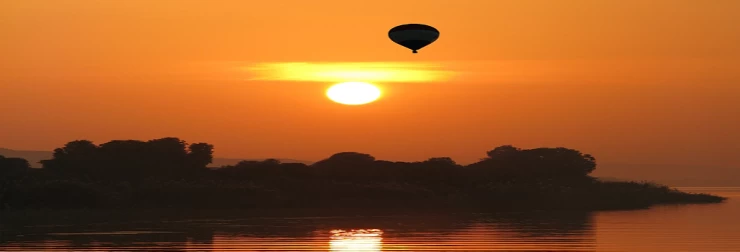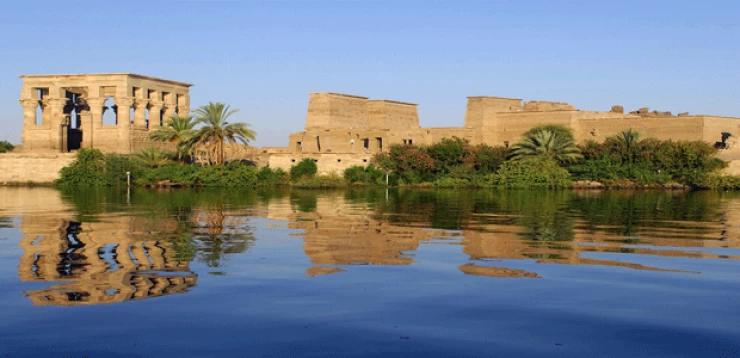
Abu Simbel Temples | Temple of Ramses II
The Abu Simbel Temple, which is the smaller of the two temples in the area, is dedicated to Hathor, the goddess associated with love. Built by Ramses II as a tribute to his beloved wife, Nefertari, the temple's façade is adorned with six colossal statues, each standing around 10 meters tall, depicting Ramses II alongside the queen. These impressive figures are complemented by smaller statues of other members of the royal family. Within the temple, visitors will find a hypostyle hall featuring pillars topped with Hathor's heads, as well as illustrations of Ramses engaged in the famous battle of Kadesh. The walls are richly decorated with scenes depicting Nefertari, Hathor, and Mut, culminating in an image of the royal couple offering gifts to the deities on the rear wall. In the 1960s, the Abu Simbel temples were carefully relocated to prevent flooding from the rising waters of Lake Nasser. This monumental task was managed by UNESCO, which oversaw the transportation and elevation of the structures to an artificial hill located 210 meters away and 65 meters higher than their original site. The Abu Simbel temples are vital stops for tourists on Nile River Cruises in Egypt and are included in various Egypt Day Tours, Travel Packages, Aswan excursions, and Luxor trips. Amun, honored as the ancient Egyptian god of the sun and air, is also referred to by names such as Amun, Amen, or Amun-Ra. He held a significant role among the deities of ancient Egypt, especially in Thebes during the early New Kingdom period (approximately 1570-1069 BC). Our experienced guide, an Egyptology expert from Cairo Top Tours, will accompany you throughout your visit, ready to answer all your questions. With outstanding services provided upon your arrival, our company is recognized as the leading choice for exploring Egypt.
Latest Articles
Admin
Aswan Governerate in Egypt
Aswan was known as ‘Sonu’ in ancient Egyptian times, meaning market, as it was a trading centre for caravans coming to and from Nubia. In the Ptolemaic era, it was called ‘Sin’ and the Nubians called it ‘Yaba Swan’. It was also known as the Land of Gold because it served as a great treasure or tomb for the kings of Nubia who lived there for thousands of years. Before the migration, Aswan's borders extended from Asna in the east to the border of Sudan in the south, and its inhabitants were Nubians, but after the Islamic conquest of Nubia, some Arab tribes settled there.
Admin
About Luxor Governorate in Egypt
The South Upper Egyptian area is home to the Egyptian governorate of Luxor. Its capital is Luxor, which was formerly Thebes, the capital of Egypt throughout multiple pharaonic eras. Its centers and cities are spread over both sides of the Nile River. The said governorate was established by Presidential Decree No. 378 of 2009, which was promulgated on the 9th of December of that year.
Admin
History of kafr El Sheikh Governorate
Kafr El Sheikh Governorate, located in the far north of Egypt in the Nile Delta, overlooking the Mediterranean Sea, is characterised by the diversity of natural life and environments, and is one of the Egyptian cities that can be visited after the end of the first semester exams at universities and schools, as it features many diverse tourist and recreational places at symbolic prices within everyone's reach.
Admin
Egypt's New Administrative Capital
The New Administrative Capital is considered the project of the era because it reflects a perfect image of the future and progress on the economic, cultural, social and civilisational level, as the capital is considered the new capital of Egypt at the present time. The importance of the New Capital is that it is a comprehensive transformation of the future of buildings, services and national and mega projects in Egypt.
Admin
Al Gharbia Governorate
The Governorate of Gharbia is inclusive in the geographical area of The Arab Republic of Egypt which is in the African continent, more specifically in the region surrounding the Nile delta, between Damietta and Rashid governance. To the control of the region from the north is Kafr El-Sheikh Governorate, from the south Menoufia Governorate, from the east – Dakahlia, Qalyubia Governorates, and to the west is the Beheira Governorate.
Admin
Hamata Islands (Qulaan Archipelago) in Marsa Alam
Each reserve has several sectors. In Wadi El Gemal Reserve, there is one of the natural areas called the Hamata area or Hamata sector in Wadi El Gemal Reserve. Its sectors are the perfect and most ecological, land and water, and host countless animals and plants found in the oceans and on the land.

























